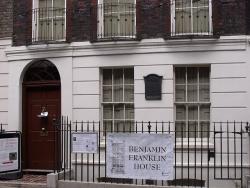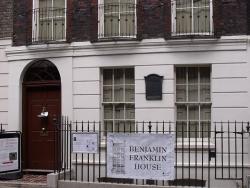In 1751 Benjamin Franklin published “Experiments and Observations on Electricity, Made at Philadelphia in America.”
Experiments summarized in this booklet determined the existence of positive and negative charges, and the difference between insulators and conductors. This work led to the invention of the lightning rod. Its complete construction was popularized in Poor Richard’s Almanack in 1753. This is the first practical engineering application of electricity.
A unifying theory covering static electricity, lightning, and stored charge was invented.
Franklin, Benjamin
YearAdded:
Image Credit:
Public Domain (Author's Choice)
Image Caption:
"Experiments and Observations on Electricity" by Benjamin Franklin, currently located at the American Philosophical Society Library
Era_date_from:
1751
2009

"Benjamin Franklin, American electrician, printer, and diplomat, spent many years on Craven Street. He lived at No. 7 between 1772 and 1775 and at No. 36 from 1757-1762 and again from 1764-1772. During these years, Franklin popularized the study of electricity, performed experiments, and served as an adviser on lightning conductors."
(The plaque may be viewed at the Franklin house museum at 36 Craven St, London, England.)
Franklin, considered one of the founders of modern Physics, was already a famous scientist when he arrived at Craven Street in 1757.
YearAdded:
Image Credit:
Courtesy Flickr/Elliott Brown (CC BY-SA 2.0)
Image Caption:
The Benjamin Franklin House on Craven Street in London, where Franklin lived for 16 years, and where he did much of his most famous work. Converted into a museum.
Era_date_from:
1757
2003
Innovations

"Benjamin Franklin, American electrician, printer, and diplomat, spent many years on Craven Street. He lived at No. 7 between 1772 and 1775 and at No. 36 from 1757-1762 and again from 1764-1772. During these years, Franklin popularized the study of electricity, performed experiments, and served as… Read More
In 1751 Benjamin Franklin published “Experiments and Observations on Electricity, Made at Philadelphia in America.”
Experiments summarized in this booklet determined the existence of positive and negative charges, and the difference between insulators and conductors. This work led to the invention… Read More


